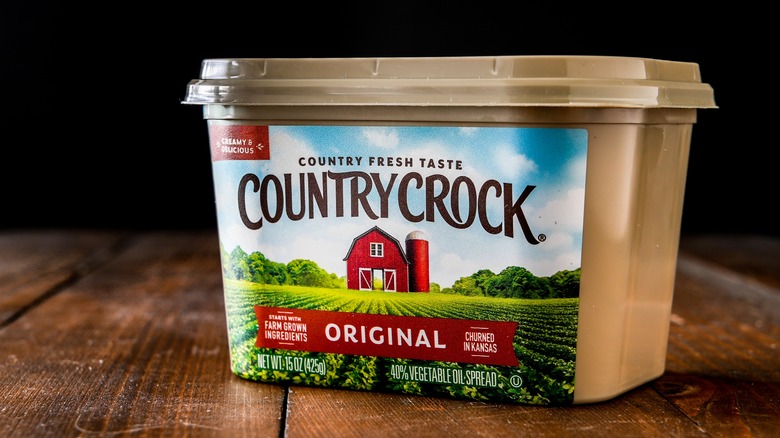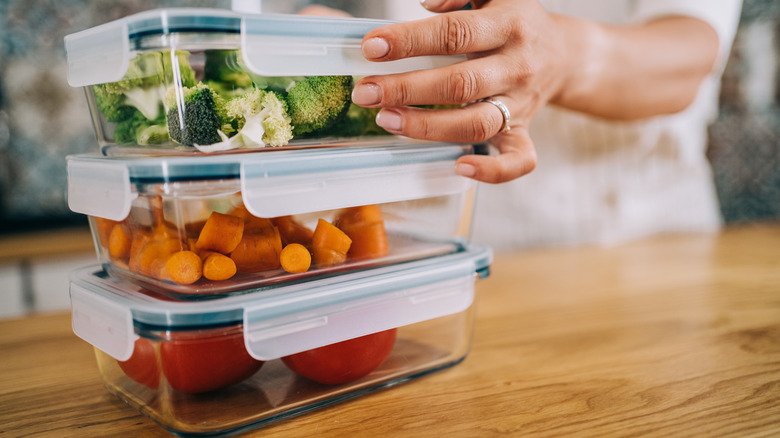The Unseen Risks Of Reusing Margarine Tubs
We may receive a commission on purchases made from links.
If you grew up with parents or grandparents from certain eras, you've no doubt encountered the "waste not, want not" mindset that leads to saving items meant to be thrown away. In many households, this extends to virtually any durable, store-bought packaging. If it can be washed and reused, by golly it will be! But is this practice of repurposing disposable containers potentially unsafe? The answer is typically yes, depending on the material used in the packaging.
One example is plastic tubs made for packaging butter and margarine. While you may be using and reusing these items to store leftovers and meal prep, they are not constructed with this in mind. The plastic materials used for most butter and margarine containers are flimsier than Tupperware-type items made specifically for reuse. This means the butter tubs and other such packages, which are intended for one-time use only, are much more likely to impart unwanted substances into your food much sooner than a plastic that was made for repetitive storage. Microplastics — tiny plastic fragments typically resulting from plastic breakdown — and chemicals like BPA, PFAS, and phthalates are among substances that can leach into foods and beverages when these containers are reused.
A system called the Resin Identification Code points to whether a plastic package is rated for storing food, and it identifies the base plastic a container is made from. Most butter tubs and similar containers are identified as a number five: polypropylene. While this material is generally considered food-safe, the rating doesn't fully account for other additives a manufacturer may use.
Best practices for reusing containers
Not only should you reconsider storing refrigerated leftovers in old butter containers, you should also completely avoid using it to reheat anything. No plastic containers should be exposed to heat or harsh detergents — the notion of microwave-safe plastic is actually a myth. When these packages enter a microwave, dishwasher, or even come into contact with hot food, it further amps up potential chemical exposure. This is also the trouble with plastic water bottles in the summertime, incidentally — heat leads to the release of chemicals from the plastic.
For disposable containers that you can reuse for a long period of time, glass packaging is best. In contrast to plastic, the materials that comprise glass food storage items are known and natural, and added chemicals aren't needed for their production. Glass is nonporous, so it won't retain bacteria like a plastic container can, and can be safely exposed to heat from microwaves, dishwashers, and foods. Containers made with this material are also great for combating freezer burnt food, if you are looking for storage solutions that can withstand extra-cold temperatures.
Be advised that not all glassware is food-safe. However, if the glass in question was acquired through a food purchase from the supermarket (like a jar for pasta sauce or pickled products), you should be good to go for reusing it. Packaging manufacturers who make food-grade glass containers are required to ensure the glassware meets FDA requirements. There are also Tupperware-type glass containers specifically made for reuse, such as this set from Amazon Basics.


